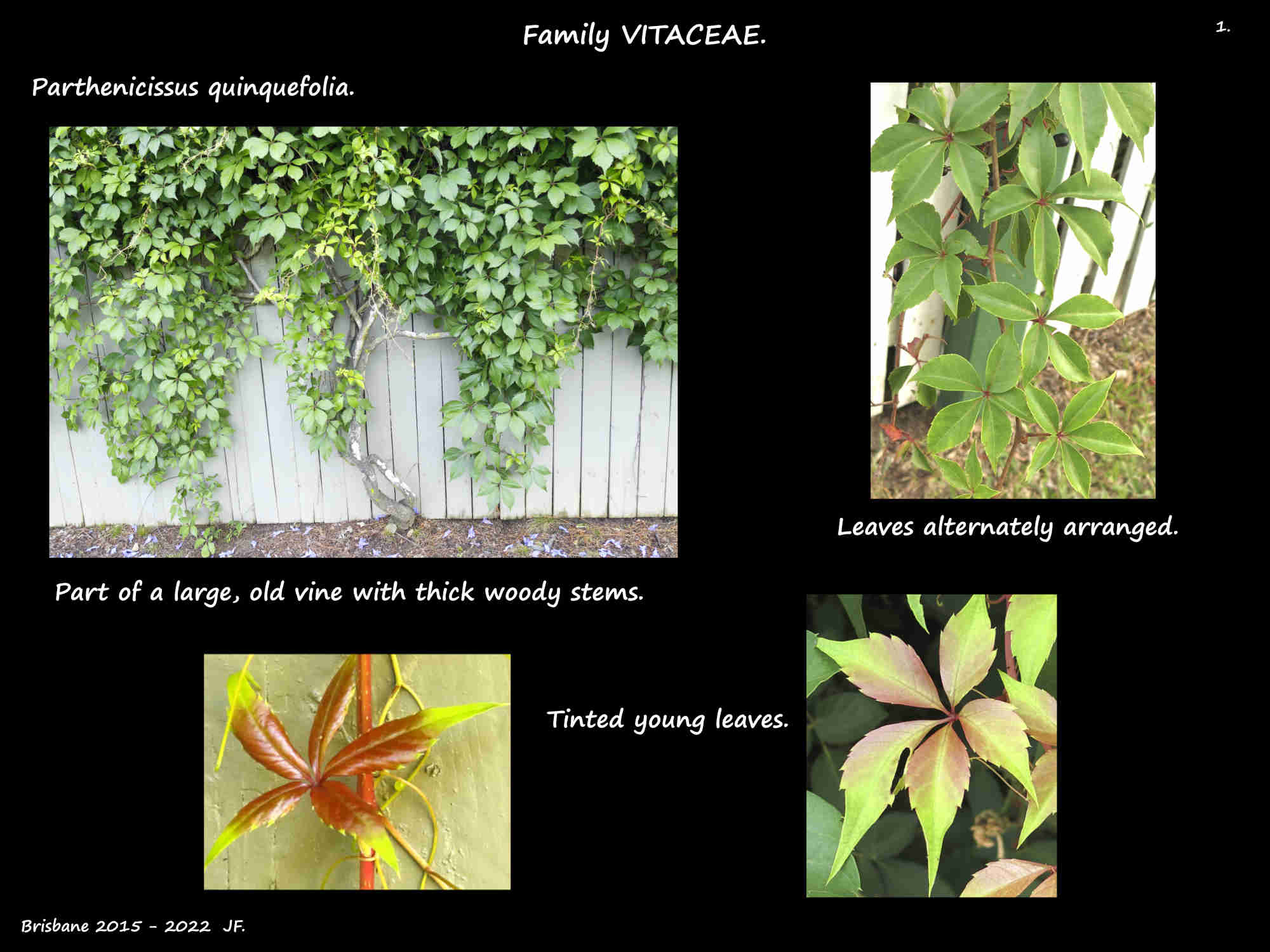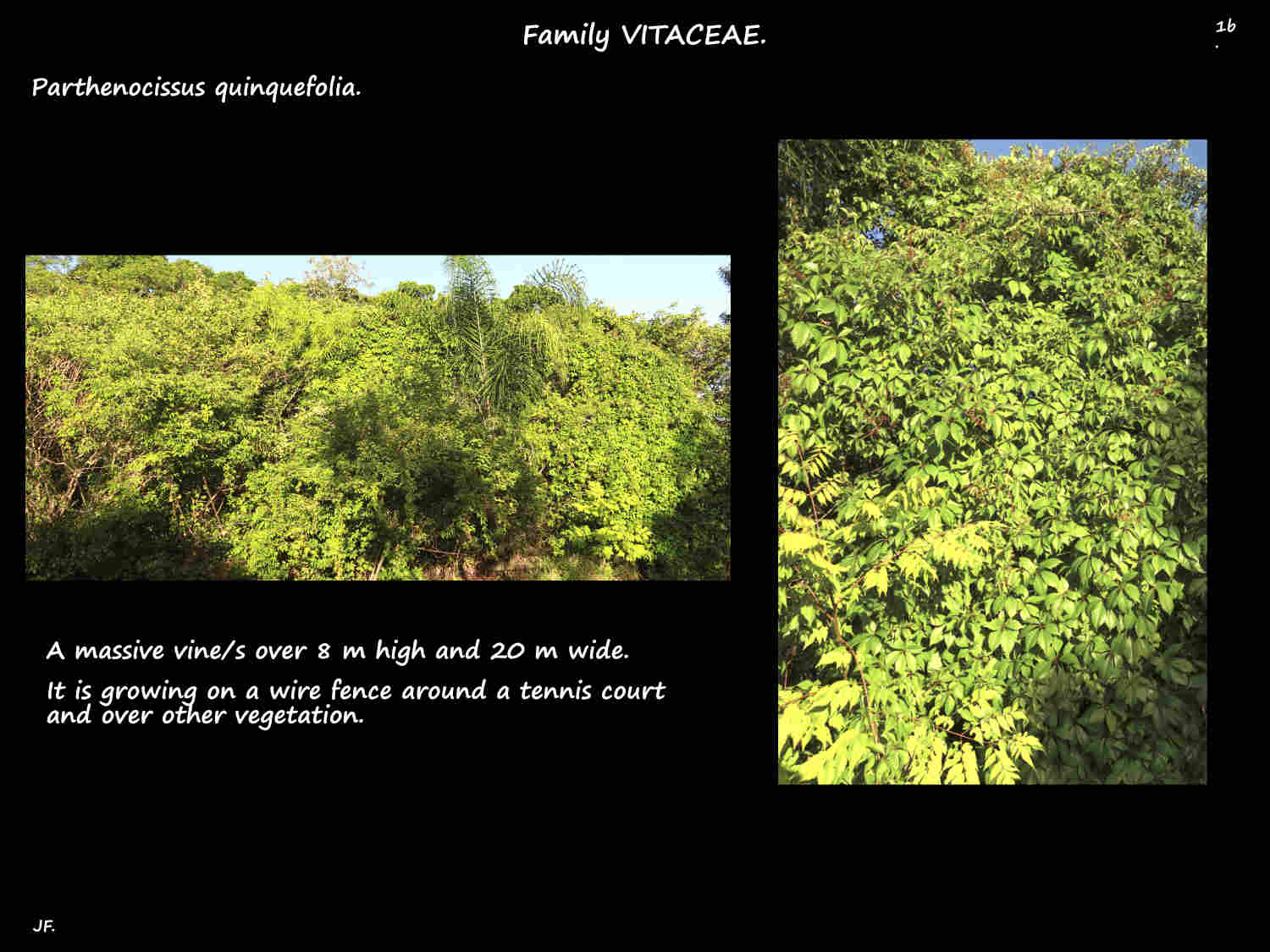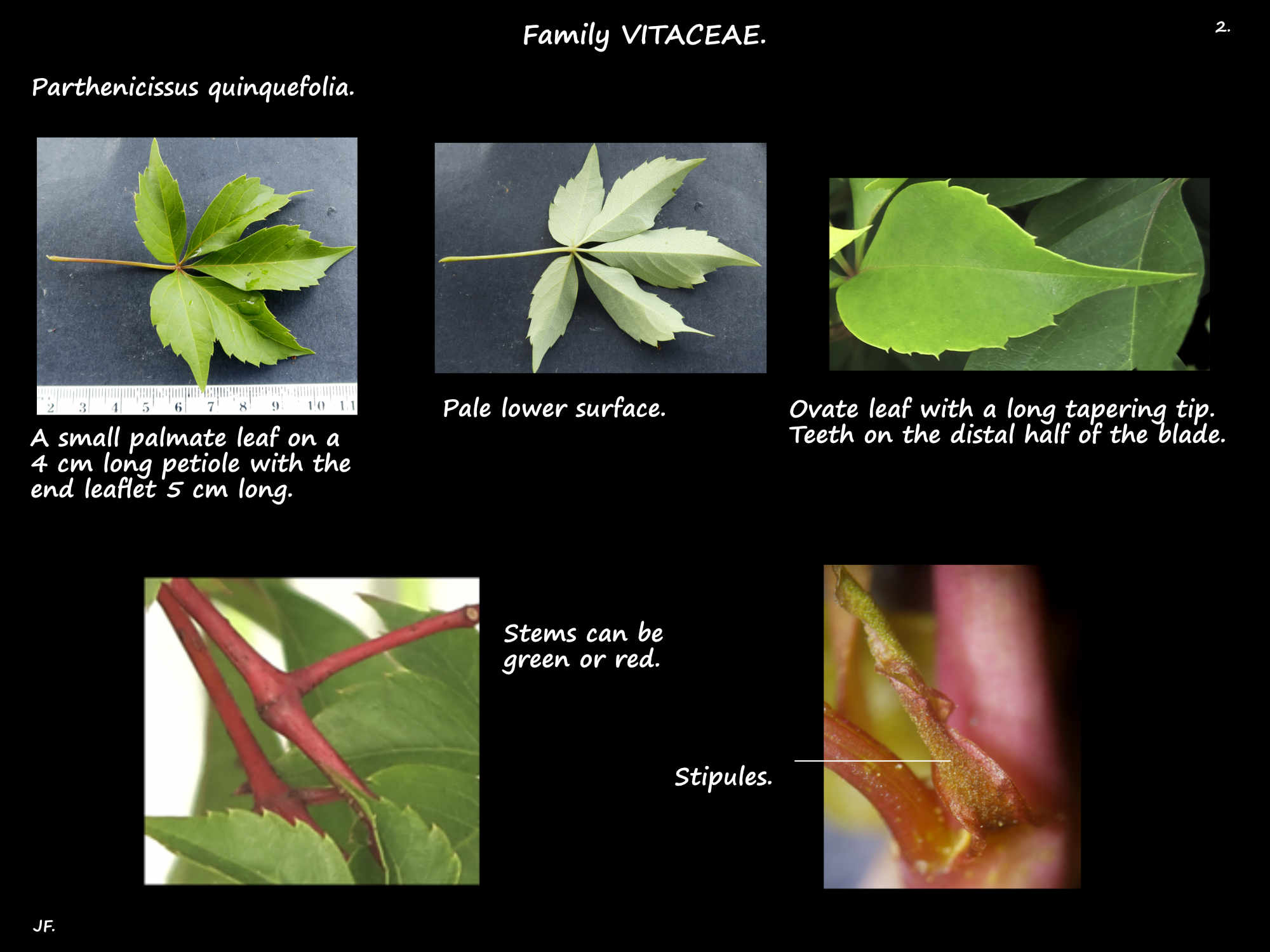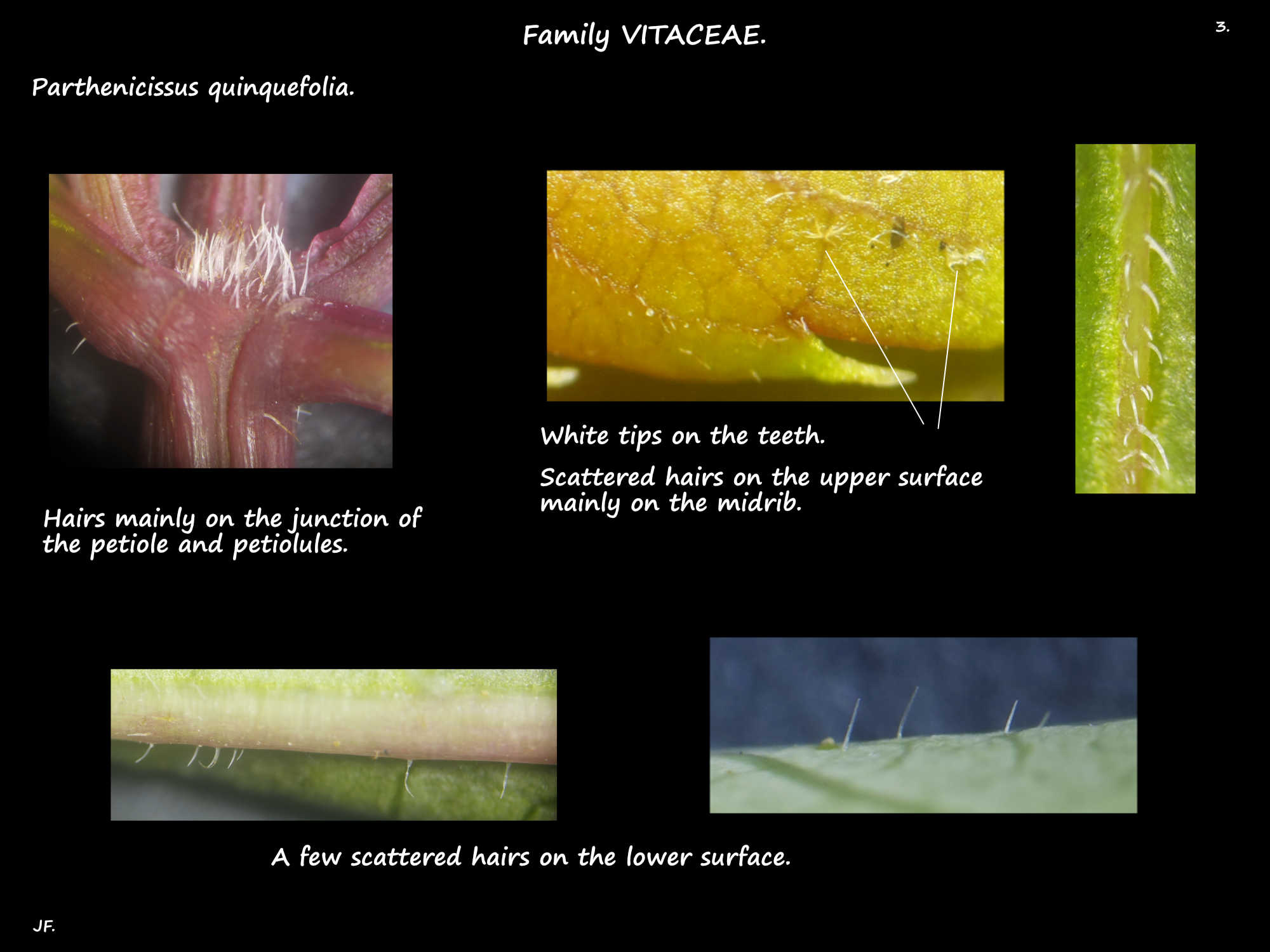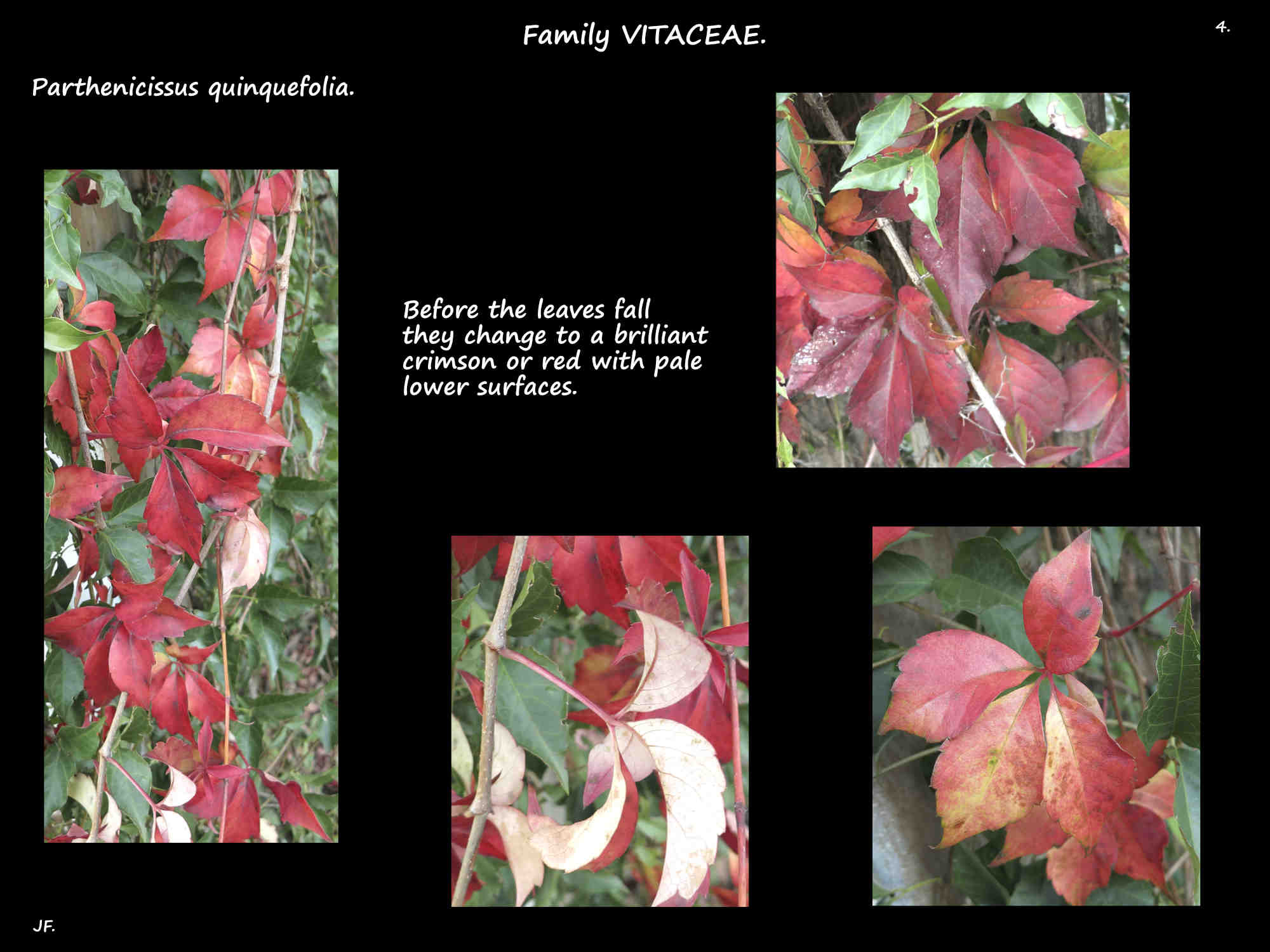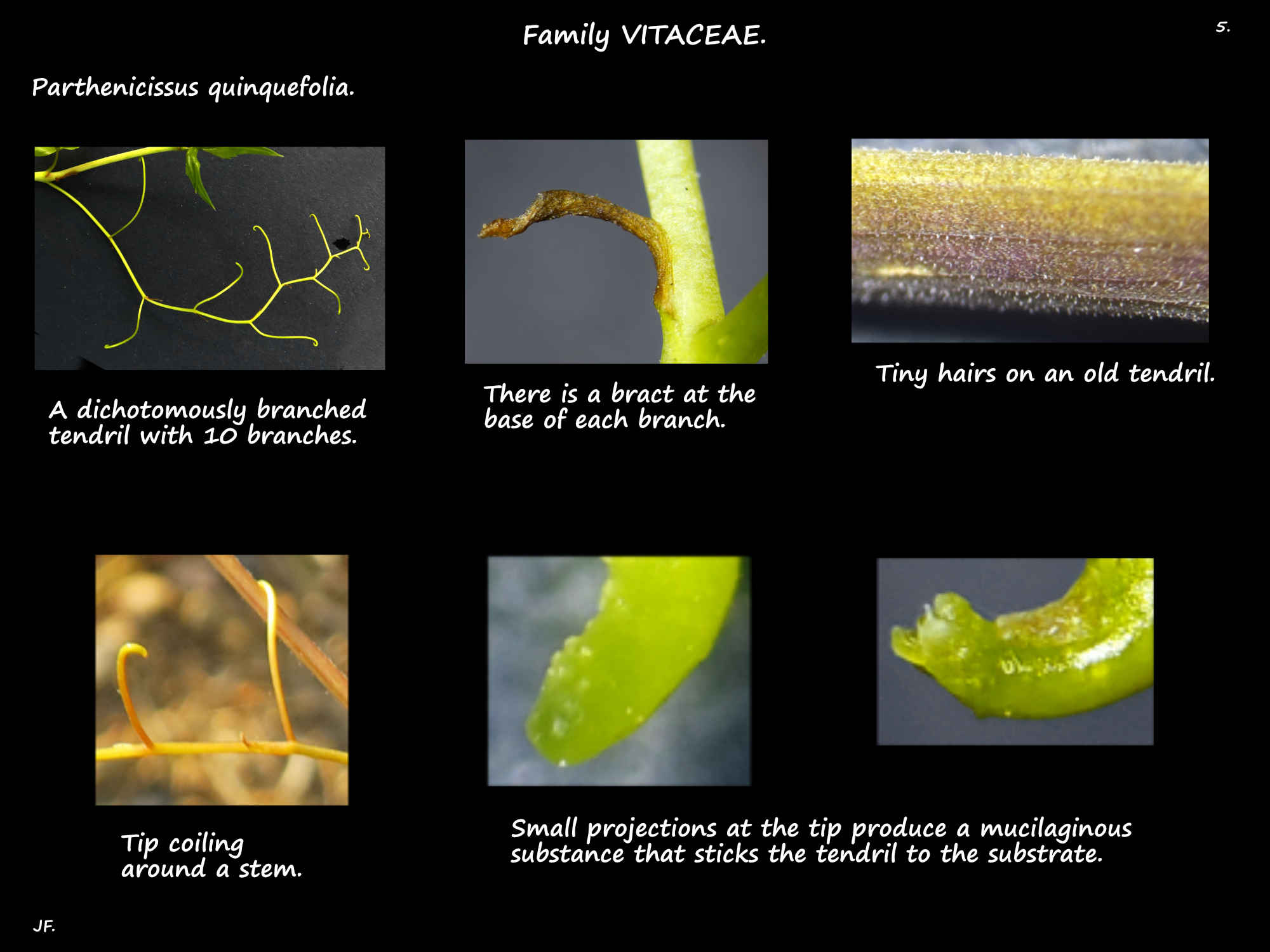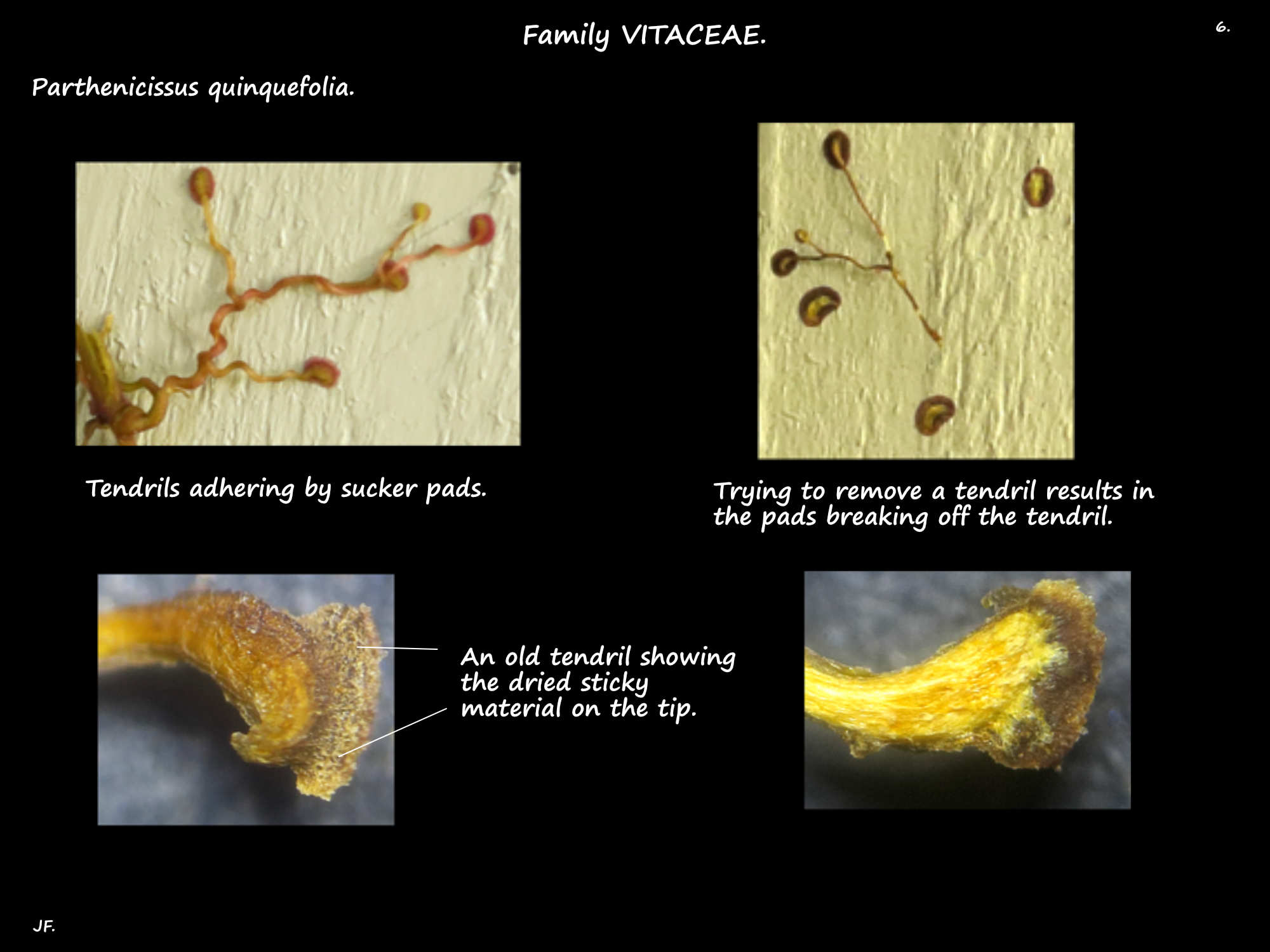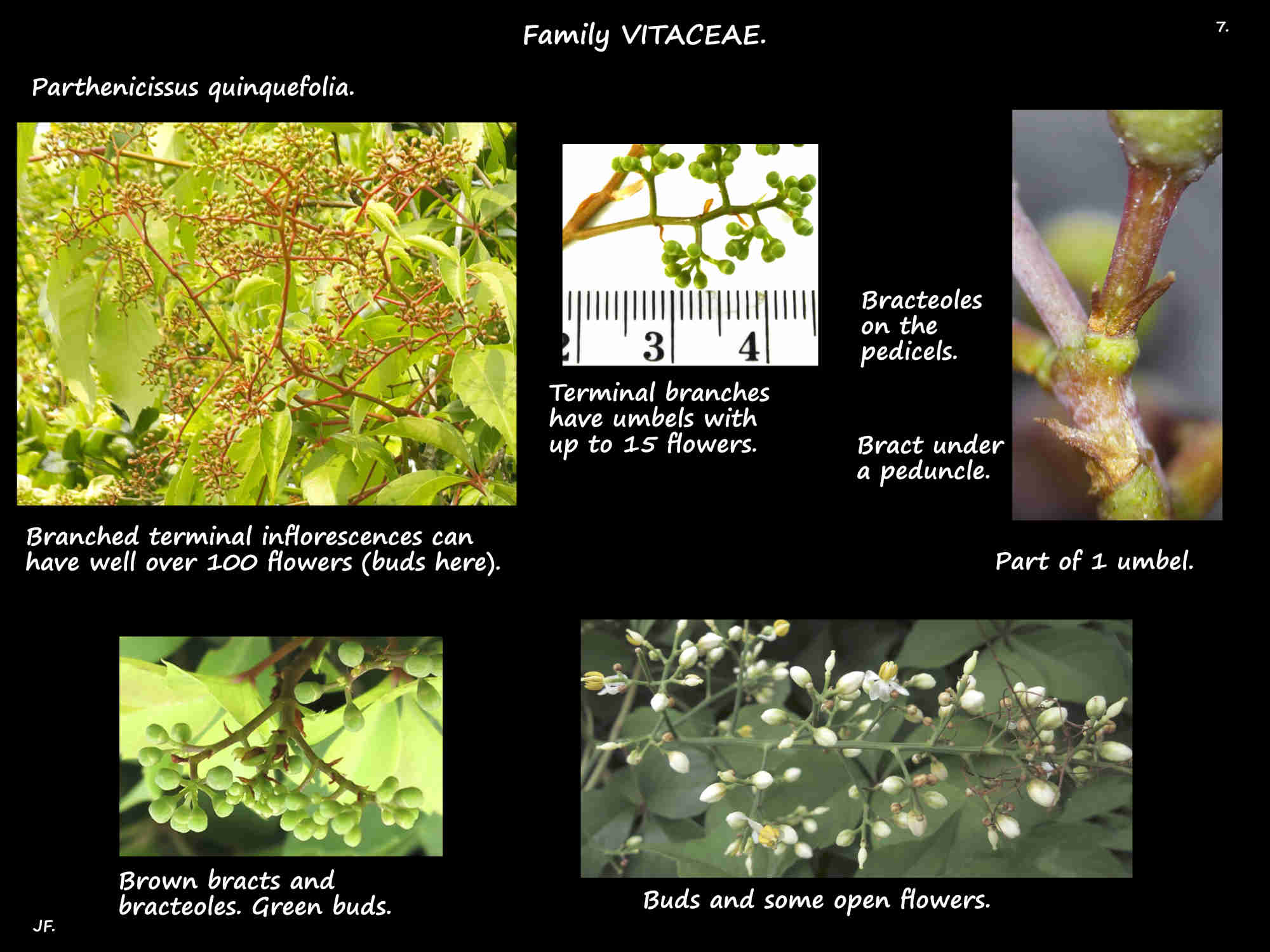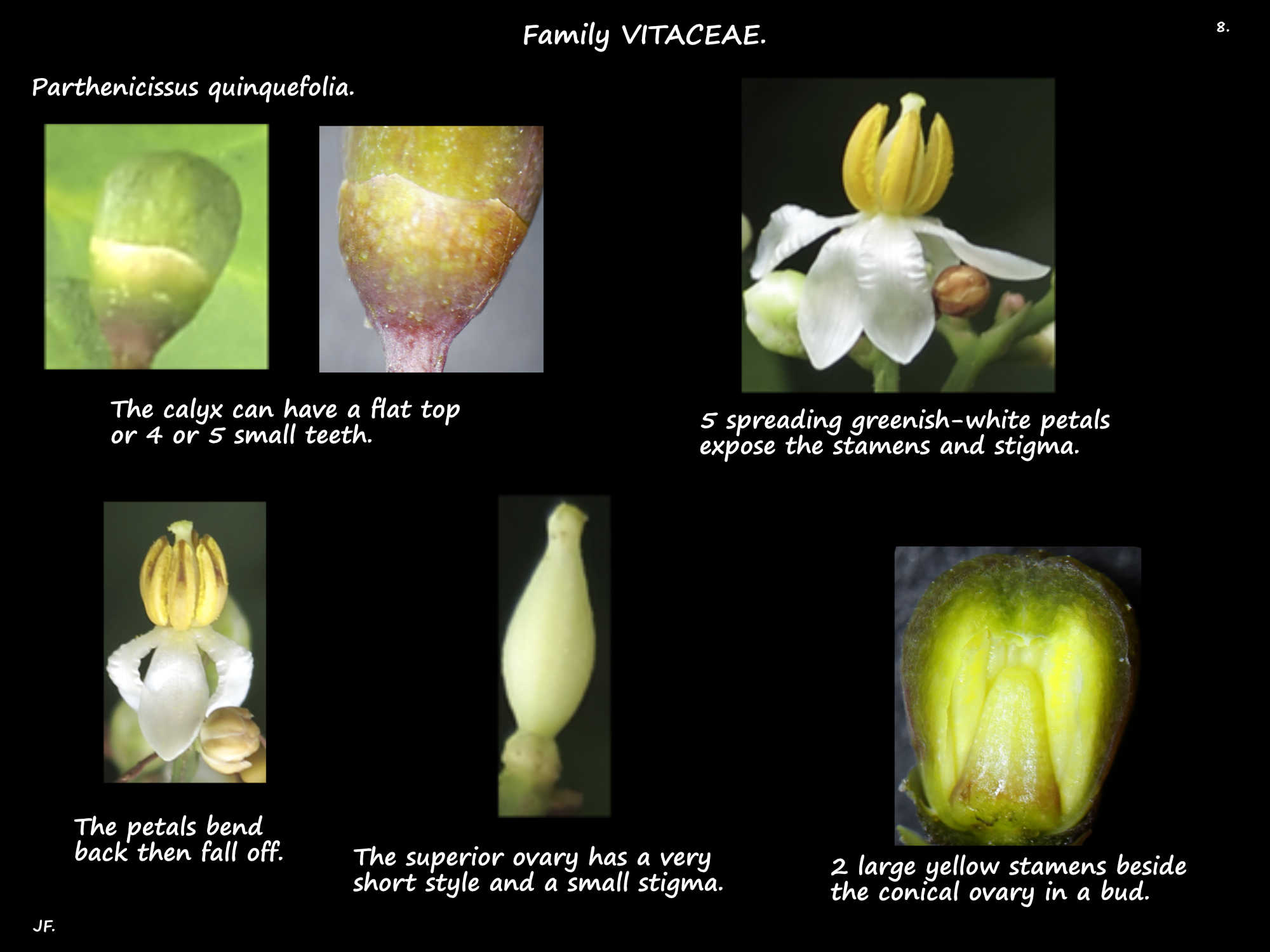Parthenocissus quinquefolia.
Native to North and Central America Virginia creeper is naturalised in S. E. Queensland.
It has been fairly common in Brisbane gardens but is less so these days.
They are deciduous vines with stems often around 15 m long but they can be double that.
Stems will grow along the ground forming mats 30 cm high or they will climb any support.
In either case adventitious or aerial roots may grow from the nodes.
The thin stems are initially red then green and older brown, woody stems can be up to 8 cm in diameter.
The nodes are swollen, the bark has fissures and elliptic lenticels and there may be scattered hairs.
They climb using their coiled, branched tendrils or adhesive pads on the tips.
The tendrils arise opposite every second leaf.
They have a zigzagged central axis and up to 12 branches that can be 3 to 4 cm long.
At the base of each branch is a small bract with hairs on the edge .
The ends of the branches may coil up and the tip is slightly swollen.
Adhesive pads on the tips allow it to climb even smooth surfaces.
Initially there are small projections just below the tip.
When the tendril touches a surface the small projections secrete a mucilaginous substance.
This acts like glue when it dries forming a very strong bond to the surface.
The palmate leaves are alternately arranged in a spiral.
The 2 stipules, up to 1 cm long at the petiole bases are fused across the node.
The grooved petioles can be up to 15 cm long with some hairs at the top.
There are 5 (3 or 7) ovate, elliptic or obovate leaflets up to 18 cm long.
Petiolules are 5 or 10 mm long and merge into the leaflet blade.
The basal pair of petiolules are the shortest and the end one the longest.
Leaflets have a tapering tip and coarse teeth mainly above the middle of the blade.
The tips of the teeth have a white mucro.
New leaves have a red tinge and adult leaves are green or yellow green.
Plants are deciduous or semi-deciduous and the leaves become bright red before they fall.
The mid veins are prominent on both surfaces.
Hairs may be present on both blade surfaces mainly along the veins or there may be none.
The branched inflorescences, up to 15 cm across, are leaf opposed near the branch ends.
Each terminal branch in the inflorescence holds an umbel of up to 15 flowers.
The main axis is slightly zigzagged and it, and the branches have some hairs.
There are bracts at the base of the branches and bracteoles under the flowers.
The mostly bisexual flowers, on red pedicels are around 6 mm across.
The calyx usually has a smooth upper rim but there may be 4 or 5 small teeth.
It is about 2 mm long and may have some hairs.
There are 5 green or yellow-green free triangular petals 2 to 3 mm long.
Their tips initially touch forming a hood then they open widely, bend backwards then fall.
There are 5 stamens, opposite the petals and on filaments about 3 mm long.
The cream dorsifixed anthers open via long slits.
There is a small nectiferous disc between the stamens and the ovary.
The superior ovary has 2 locules each with 2 ovules.
The style is very short or absent with the stigma almost on the ovary.
The stigma is very small and it may have 2 small lobes.
The roughly spherical fruit are seen labeled as berries and drupes.
They are under 1 cm across and dark bluish-black often with a whitish bloom.
Each has up to 4 brown heart-shaped seeds with a round chalazia.
J.F.

